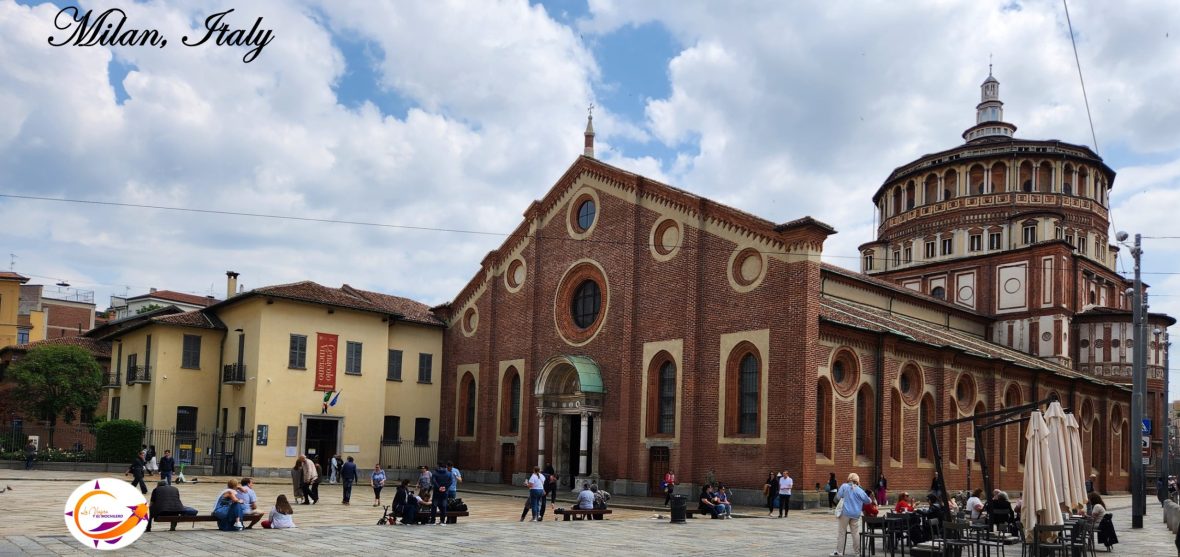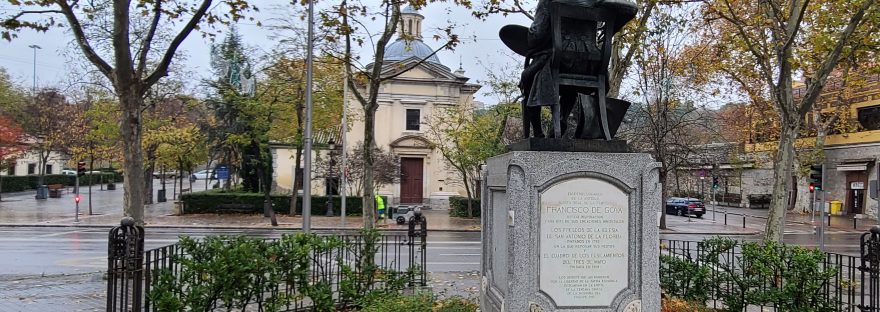Arriving at #5 of the “San Antonio de la Florida” Roundabout on the banks of the Manzanares River in Madrid, you look straight ahead and find not one, but two identical hermitages. Now, it is the so-called San Antonio de la Florida hermitage on the right side of the square, the reason for arriving there. It is the only one, of three hermitages, dedicated to San Antonio de Padua that has survived of those that existed on the outskirts of Madrid. It is known as the hermitage of “San Antonio de la Florida” because it is located on the “Paseo de la Florida”, where formerly stood the Palace of Florida, acquired by Charles IV. Today, there are no remains of this palace as it was demolished in the 19th century to enable the construction of the new “Estación del Norte” (now the Príncipe Pío Railroad Station).
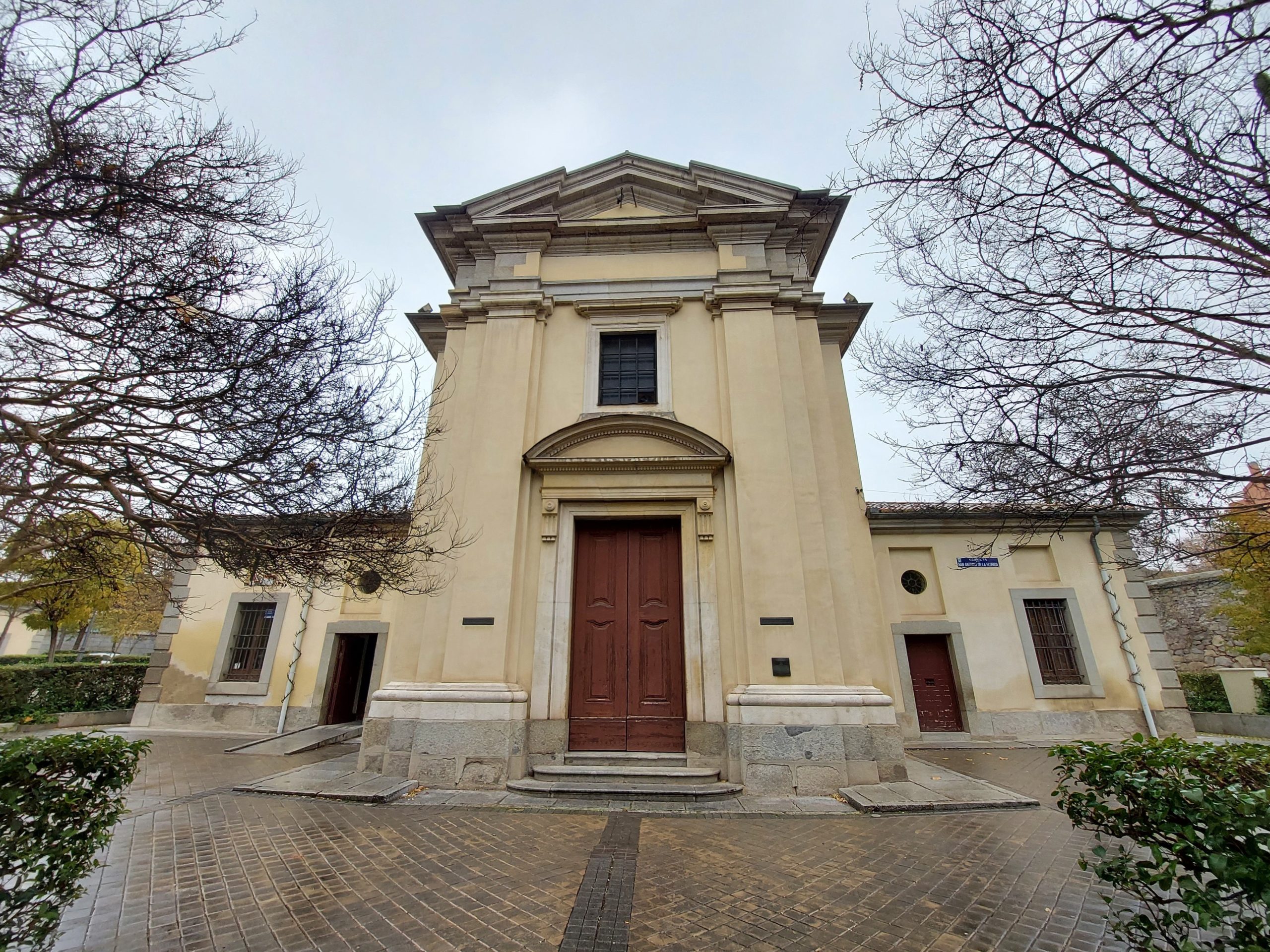
The origin of this hermitage dates back to 1732, the year in which it was erected with an image of San Antonio de Padua and led to its devotion in the town. Precisely, in Madrid, its pilgrimage is one of the most important traditions. It is celebrated on June 13 and both then and now, young unmarried women who are looking for a groom to marry do the pilgrimage.
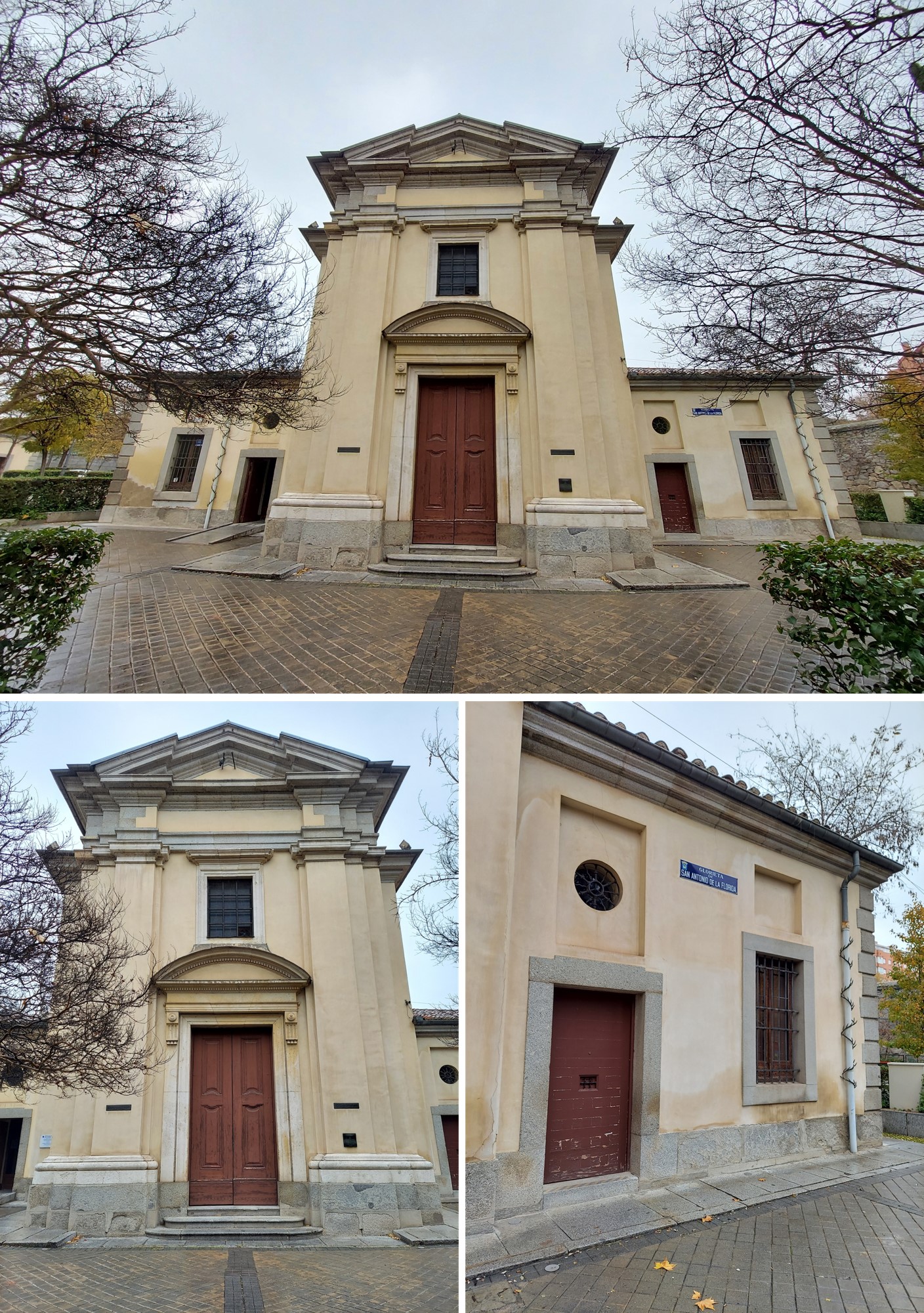
It was by order of Charles IV, that at the end of the 18th century the architect Felipe Fontana built the new hermitage, following the neoclassical style, with a Greek cross plan and dome. Our first impression was of a structure of elegant architecture, but sober, with hardly any decoration.

However, it is the set of fresco paintings by Francisco de Goya that we found there, which makes this hermitage unique, making it a masterpiece. Therefore, to ensure the preservation of Goya’s frescoes, the building was declared a National Monument in 1905 and later, in 1928, an identical church was built beside it, transferring the worship to the new one and reserving the original hermitage as a museum.
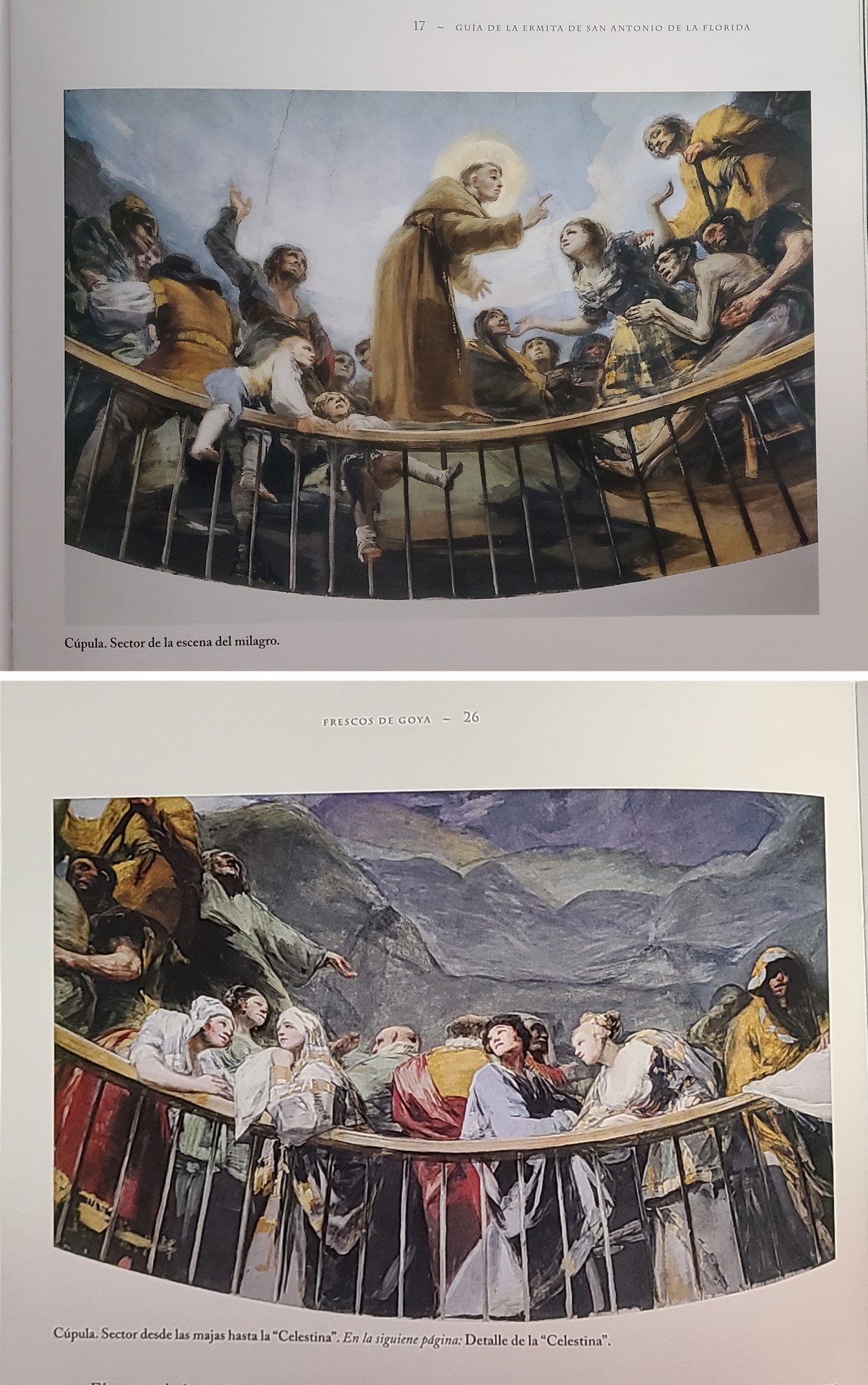
Entering the hermitage of “San Antonio de la Florida” and observing the frescoes of Francisco de Goya is a grandiose experience. Goya painted this, one of his masterpieces, with tempera brushstrokes at the end of the 18th century, in 1798, at the age of 52, when he was a Royal court painter. In spite of suffering continuous dizziness, due to his worsening deafness, he went every night in a horse-drawn carriage to the hermitage, with his friend and collaborator Asensio Juliá. He painted the frescoes of “San Antonio” in just six months, between the months of August and December. He gave these frescoes his style, those phantasmagoric visions, which were not necessarily popular at the time.
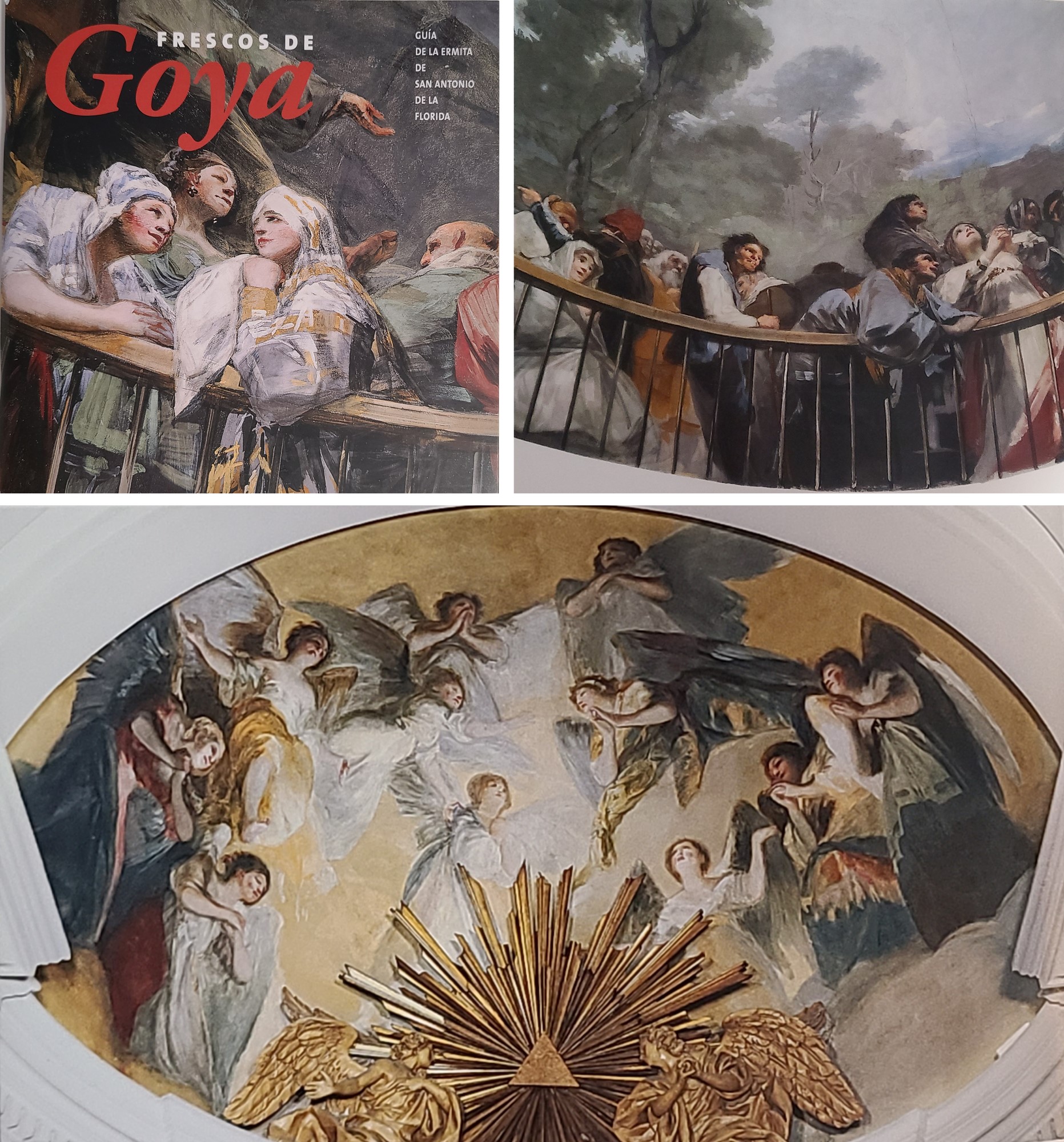
Since it is not possible to take photographs of the interior, we share some images from the Guide to the Hermitage of “San Antonio de la Florida”, which is entitled “Frescos de Goya”, which can be purchased at the hermitage.
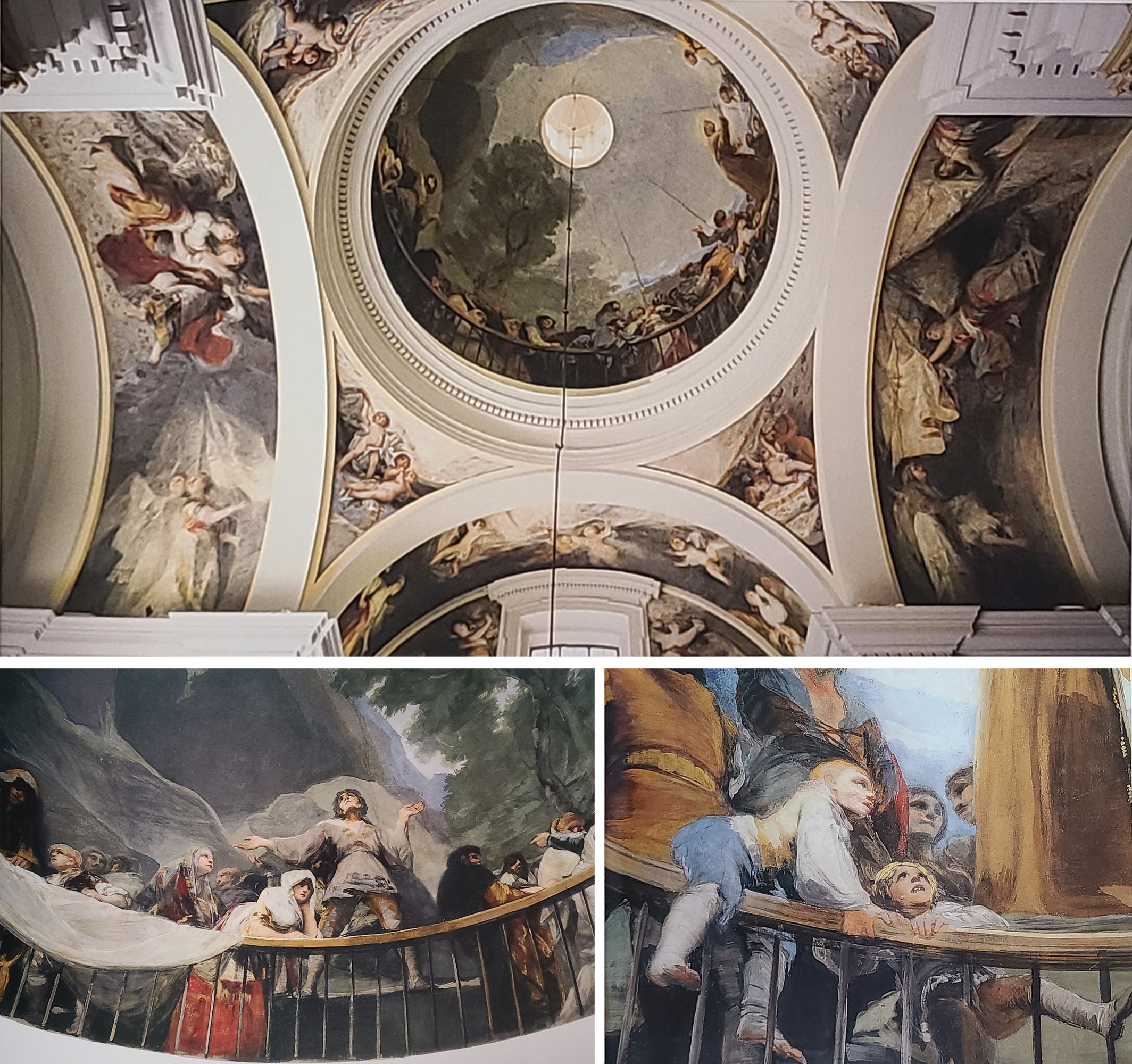
Goya employed in the frescoes what is known as “quadratura”, which is derived from the technique of “trompe l’oeil”, using painting methods that create effects that deceive the eye through the use of perspective, architectural settings, among others, so that what is actually a flat or nearly flat surface, is perceived as a space with depth and volume.
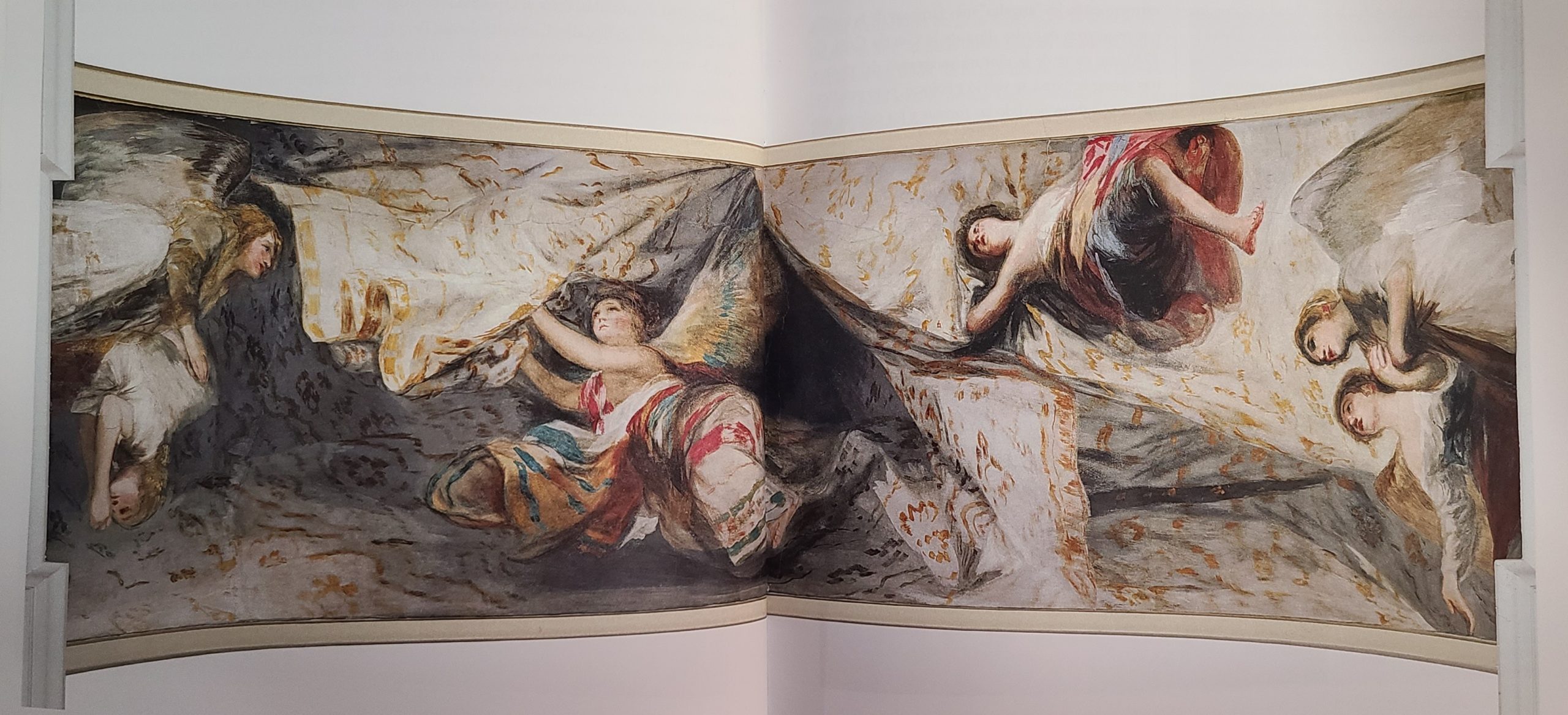
This technique is widely used precisely in mural paintings and ceiling frescoes and its development came from the need to decorate in fresco large mural surfaces in the interior of churches, palaces or villas. The hermitage of “San Antonio de la Florida” is a great example of this technique.
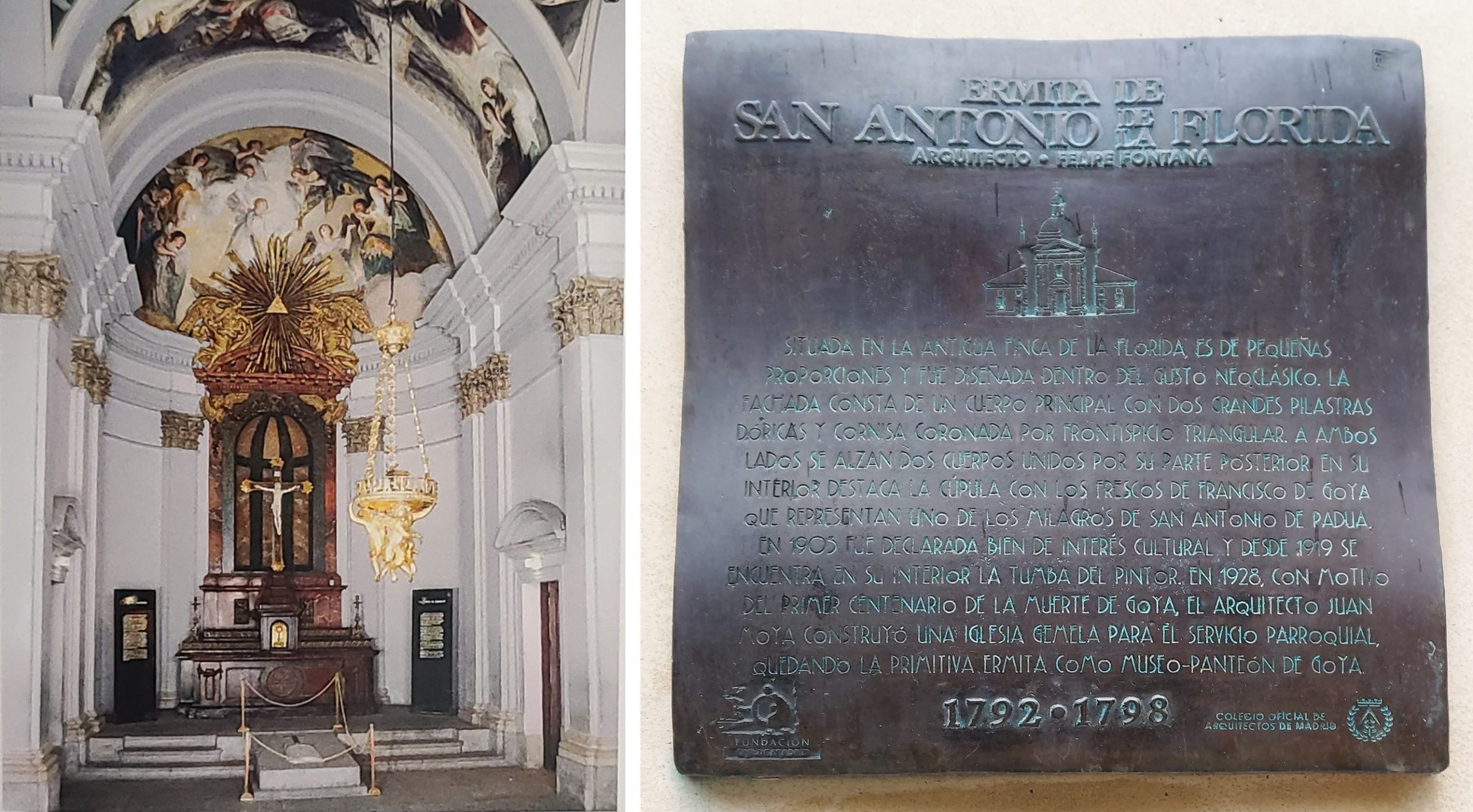
This chapel is also a memorial pantheon for Francisco de Goya, since in 1919 his remains were transferred here, brought from Bordeaux, where he died in 1828. Next to him is buried his father-in-law and great friend, Martín Miguel de Goicoechea. When they were transferred to Madrid in 1919 they were buried together, to avoid a possible error in the identification of the mortal remains. Goya’s tomb is made of granite and preserves the tombstone of the Bordeaux grave.
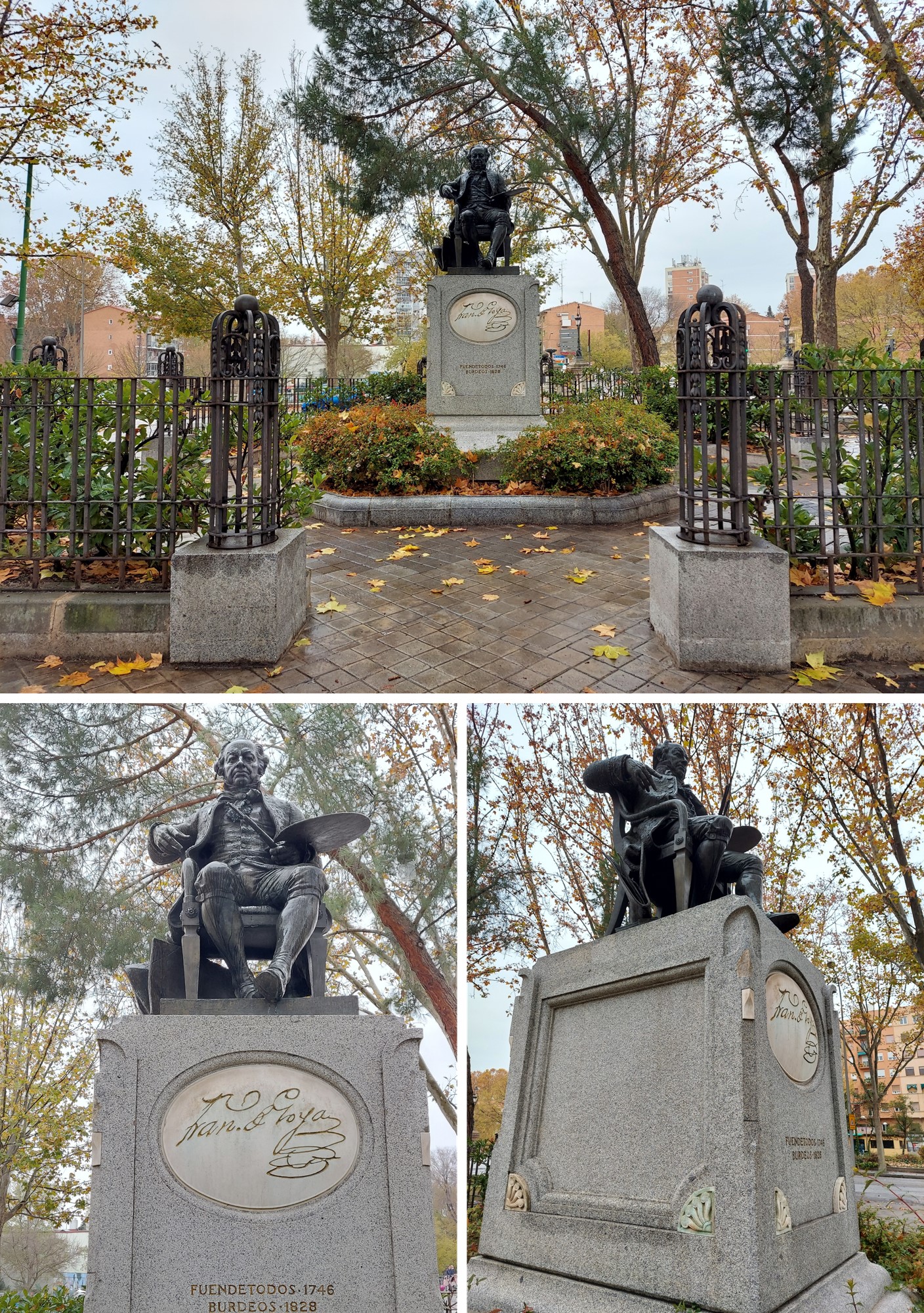
After contemplating these impressive frescoes by Goya, we went to see his statue which is located across from the chapel. It was cast in bronze and is the work of the Madrid artist José Llaneces.
************
Resources:
Guide to the Hermitage of San Antonio de la Florida, Frescos de Goya.
https://es.wikipedia.org/wiki/Ermita_de_San_Antonio_de_la_Florida
https://www.patrimonionacional.es/visita/ermita-de-san-antonio-de-la-florida
https://www.rutasconhistoria.es/loc/ermita-de-san-antonio-de-la-florida
